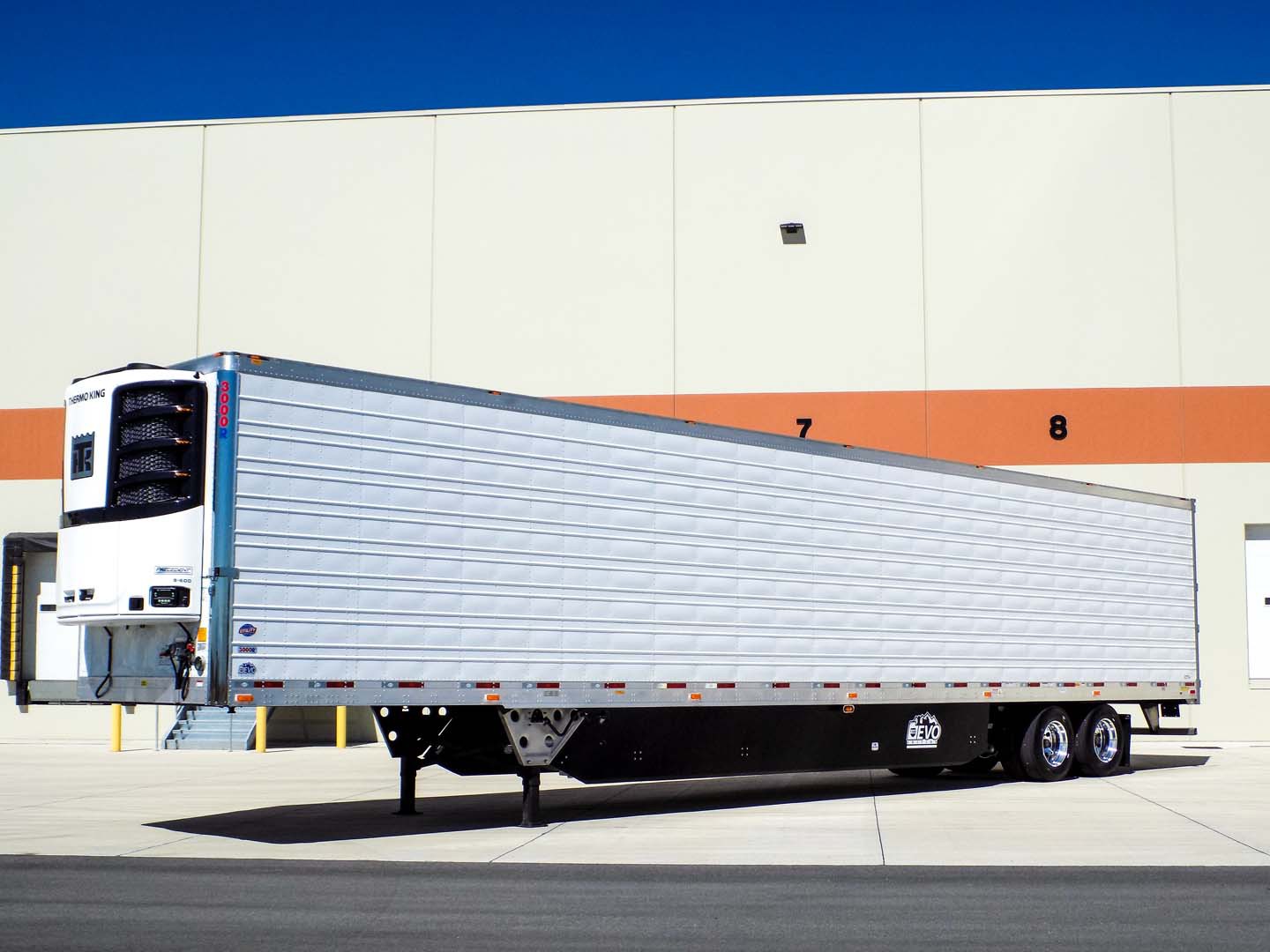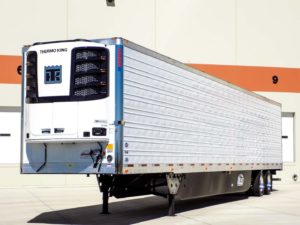
6 min read • Reefer Trailers
All Your Reefer Trailer Questions Answered

Copyright © 2025 1580 Utility Trailer
6 min read • Reefer Trailers

The world of trucking includes a variety of trailers. One of the most common trailers used is a reefer trailer. Used to transport temperature-sensitive goods, reefer trailers are used throughout the transportation industry for their various capabilities. Although reefer trailers are commonly used, there are many questions regarding reefer trailers that frequently go unanswered. Let’s discuss the top questions.
A reefer trailer is also known as a refrigerated trailer. Primarily a dry van, reefers are built with insulation and refrigeration capabilities for the transport of perishable and temperature-sensitive goods. While these goods aren’t meant to be heated or cooled, reefers are able to maintain a pre-set temperature. Normally truckers invest in reefer trailers to eliminate product spoilage in their loads.
Reefer trailer’s main components include a reefer unit, an insulated box, reefer air chute, air ride suspension, and tire inflation system. Reefer unit’s important components include the engine, compressor, evaporator, and condenser. Reefers are typically 53 foot long but are also available in a variety of sizes.
A refrigerated trailer is meant to maintain the temperature during the transport of perishable and temperature-sensitive goods. The purpose of refrigeration is to remove heat, take it from one place, transport it, and release it to another. Since reefers are able to collect and pump heat, they can be used to heat and cool shipments.

Reefer trailers are used in the transport of goods that are temperature-sensitive and/or perishable. This includes fresh products, plants, pharmaceuticals, personal care products, seafood, dairy, meat, fruits, vegetables, and more. Due to the nature and sensitivity of these products, a refrigerated trailer is better equipped to protect against spoilage, damage, and varying weather changes.
Yes, reefer trailers are available for rent. Utility Trailer Sales of Utah offer a wide selection of rental reefer trailers. Simply, start the process by filling out a rental application. Once you’ve sent in an application a member of the Utility Trailer team will process your application and respond back to you via phone or e-mail. Once approved, you’ll be able to select the equipment you need, confirm rental rates, and insurance requirements. Once everything is filled out and signed, along with your deposit, you’ll be all set to hit the road.
You can buy a reefer trailer using our online inventory. Ranging from new to used trailers, we offer a wide selection of reefer trailers. Once you find the reefer trailer you need, you can call or e-mail us regarding any purchase.
In a reefer trailer, its compressor is driven by a small diesel engine. The compressor draws gaseous refrigerant in and compresses it. This pressure is then able to liquefy into gas. The liquefied gas then gives off heat to the body of the compressor and the air. After this process, the trailer is still relatively warm, so it’s then pumped to the condenser.
Once pushed into the condenser, it goes through a heat exchanger process. During this phase, warmth flows from the liquid to the walls and fins of the tubing. This process works similarly to the way a radiator cools an engine.
The refrigerant, having given up much of its heat to the condenser, is now a cool liquid that’s put under additional pressure. This cool liquid is then pushed through a metering valve into the evaporator. Located in the trailer or compartment, the evaporator is in charge of cooling the liquid.
Then using the metering valve, the amount of refrigerant released into the evaporator is controlled. It also helps maintain backpressure in the high-pressure part of the system, which runs from the compressor to the evaporator.
In the evaporator, the refrigerant rapidly expands, once again becoming a gas. As it does, it absorbs a great amount of heat from its surroundings. Then the air from inside the trailer is blown over the evaporator. The refrigerant gas is then drawn back to the compressor where the cycle starts again.
Typically, the goods inside the trailer are pre-cooler prior to shipment to ensure all goods are kept in good condition throughout the transport.
The amount of fuel your reefer trailer burns depends on many things. Everything from ambient temperature, product temperature (when loaded), type of unit, and the condition of the trailer can affect the amount of fuel you burn. Since a reefer unit is on a closed loop system independent of the truck, driving habits don’t affect fuel efficiency. However, a poorly maintained reefer unit could increase your fuel consumption.
If everything is running close to normal, a reefer’s 50-gallon tank could last up to 4-5 days. Simple habits, such as maintaining your reefer trailer can pay big dividends year after year. As a word of caution, you should refuel your tank whenever you reach the 1/4 tank level.
Renting from Utility Trailer Sales of Utah is a great option for many truckers. Luckily our online rental application makes the rental process fast and easy. Many other companies’ rental applications take time to process, but our team is able to process applications within 24 hours, so you’ll know right away if renting is available and how much it costs.
A refrigerated container has an impressive temperature range. The range stretches -65˚c to 40˚c or -85˚f to 104˚f. This range makes reefer trailers suitable for a wide range of temperature-sensitive cargo, from fresh produce to hazardous chemical and more.
Browse our inventory of new and used reefer trailers for more information about specific models and more.
Quick Links
Stay up-to-date with our newsletters.
"*" indicates required fields
"*" indicates required fields
"*" indicates required fields
Found result/s